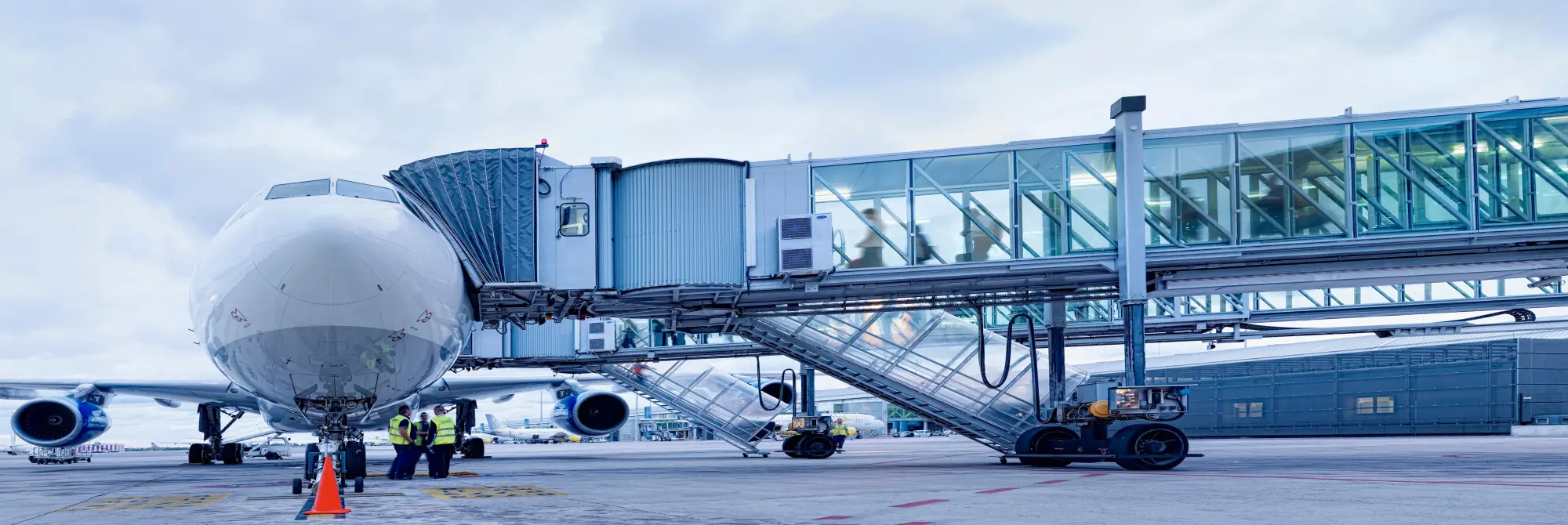Imagine a seamless transition from the comfort of the terminal to your awaiting aircraft. This smooth journey is facilitated by the Passenger Boarding Bridge (PBB) Market, a sector dedicated to manufacturing the essential enclosed passageways connecting airport terminals to airplanes. Nicknamed air bridges, jet bridges, or jetways, these extendable corridors create a weather-protected and secure connection, enhancing passenger comfort and safety during boarding and disembarkation. Driven by a surge in air travel, rising airport infrastructure investments, and increasing demand for passenger convenience, the Passenger Boarding Bridge Market is experiencing significant growth. Let’s explore the diverse applications of passenger boarding bridges and delve into the exciting trends shaping this dynamic market.
Connecting Passengers and Aircraft: Applications of Passenger Boarding Bridges
Passenger boarding bridges play a vital role in ensuring smooth passenger flow and operational efficiency at airports:
- Boarding and Disembarkation: PBBs provide a safe and convenient passage for passengers to board and disembark from airplanes, minimizing delays and congestion on the tarmac.
- Weather Protection: Enclosed walkways shield passengers from harsh weather conditions like rain, wind, extreme heat, or cold, ensuring a comfortable boarding and disembarkation experience.
- Cargo and Catering Access: Passenger boarding bridges often incorporate designated areas for loading and unloading cargo and catering supplies directly onto the aircraft.
- Safety and Security: PBBs control passenger access to the aircraft, enhancing airport security measures and preventing unauthorized personnel from reaching airplanes.
- Improved Aircraft Utilization: Faster boarding and disembarkation times facilitated by PBBs allow for quicker aircraft turnaround times, optimizing aircraft utilization by airlines.
Get Exclusive Sample Copy of the Report: https://www.futuremarketinsights.com/reports/sample/rep-gb-4624
A Bridge to the Future: Growth Factors in the Passenger Boarding Bridge Market
The Passenger Boarding Bridge Market is experiencing a surge in popularity driven by several key trends:
- Rising Air Passenger Traffic: The global increase in air travel creates a growing demand for efficient passenger boarding and disembarkation solutions, propelling the PBB market.
- Airport Expansion and Modernization: Investments in expanding existing airports and building new ones necessitate the installation of modern passenger boarding bridges to meet growing passenger volume.
- Focus on Passenger Experience: Airports are increasingly prioritizing passenger comfort and convenience. PBBs contribute to a positive passenger experience by offering a safe, secure, and weather-protected boarding process.
- Technological Advancements: Manufacturers are developing PBBs with innovative features like automated docking systems, improved passenger information displays, and compatibility with larger aircraft models.
- Focus on Efficiency and Sustainability: The development of energy-efficient PBBs with optimized designs and materials reduces operational costs and environmental impact.
Throughout the forecast years until 2033, the global passenger boarding bridge market is anticipated to develop at a CAGR of 8%. In 2023, the net worth of all available passenger jet bridges for sale globally is estimated to be USD 2.05 billion. The passenger boarding bridge market analysis report by FMI further predicts the market valuation to reach USD 4.43 billion by 2033.

Challenges to Consider: Keeping the Bridge Up and Running
Despite the promising outlook, the Passenger Boarding Bridge Market faces some hurdles:
- High Initial Investment Costs: Passenger boarding bridges can be expensive to purchase and install, which may be a barrier for some airports, particularly smaller ones.
- Maintenance Requirements: Regular maintenance is crucial for ensuring the safe and efficient operation of PBBs, requiring trained personnel and spare parts readily available.
- Compatibility with Different Aircraft Types: The evolving size and configurations of new aircraft models necessitate PBBs with sufficient reach and flexibility to accommodate them.
- Space Constraints at Airports: Limited space at some airports can pose challenges for installing and operating large or complex passenger boarding bridges.
Get Full Report Now: https://www.futuremarketinsights.com/checkout/4624





